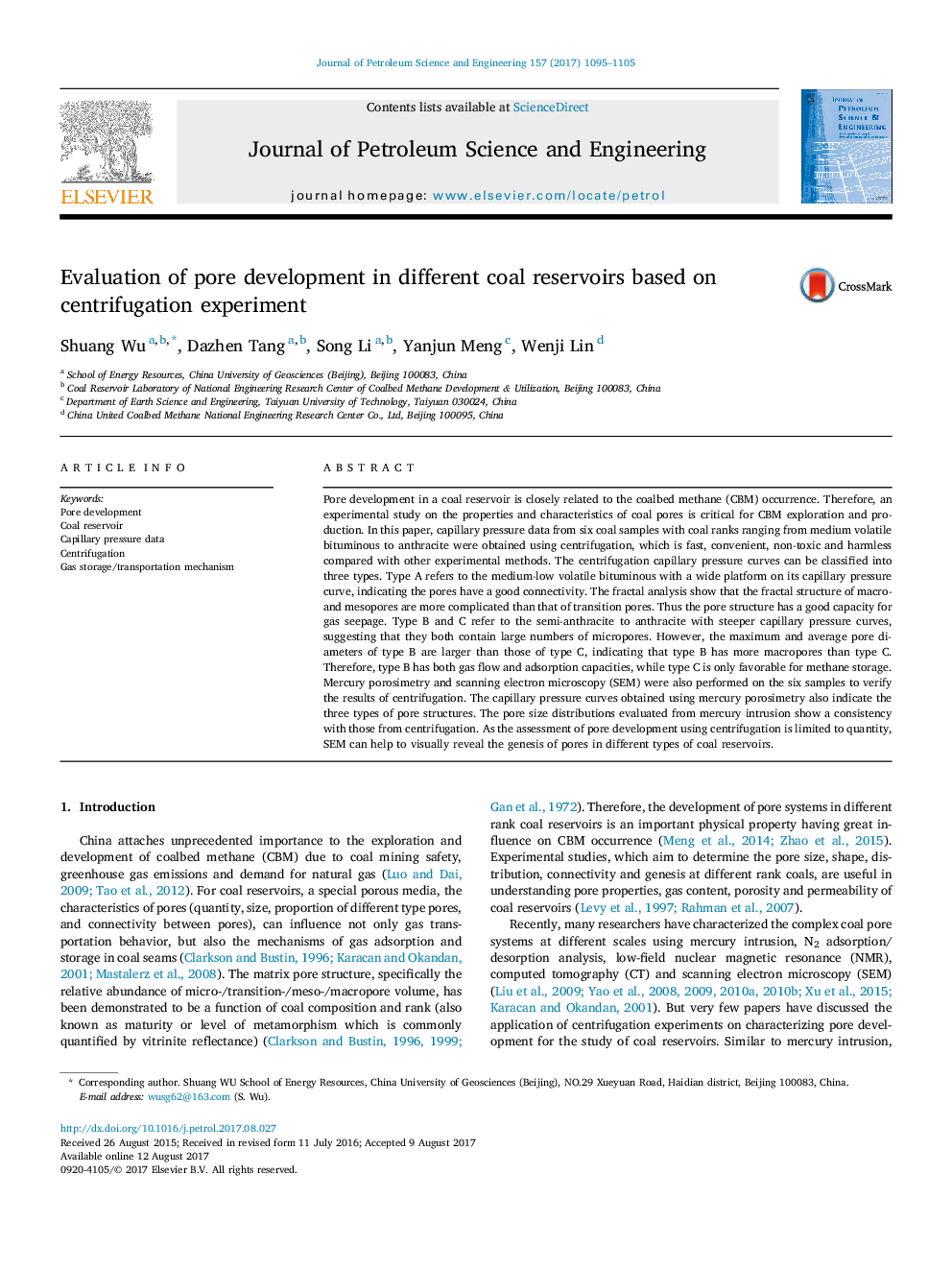| Article ID | Journal | Published Year | Pages | File Type |
|---|---|---|---|---|
| 5484015 | Journal of Petroleum Science and Engineering | 2017 | 11 Pages |
Abstract
Pore development in a coal reservoir is closely related to the coalbed methane (CBM) occurrence. Therefore, an experimental study on the properties and characteristics of coal pores is critical for CBM exploration and production. In this paper, capillary pressure data from six coal samples with coal ranks ranging from medium volatile bituminous to anthracite were obtained using centrifugation, which is fast, convenient, non-toxic and harmless compared with other experimental methods. The centrifugation capillary pressure curves can be classified into three types. Type A refers to the medium-low volatile bituminous with a wide platform on its capillary pressure curve, indicating the pores have a good connectivity. The fractal analysis show that the fractal structure of macro- and mesopores are more complicated than that of transition pores. Thus the pore structure has a good capacity for gas seepage. Type B and C refer to the semi-anthracite to anthracite with steeper capillary pressure curves, suggesting that they both contain large numbers of micropores. However, the maximum and average pore diameters of type B are larger than those of type C, indicating that type B has more macropores than type C. Therefore, type B has both gas flow and adsorption capacities, while type C is only favorable for methane storage. Mercury porosimetry and scanning electron microscopy (SEM) were also performed on the six samples to verify the results of centrifugation. The capillary pressure curves obtained using mercury porosimetry also indicate the three types of pore structures. The pore size distributions evaluated from mercury intrusion show a consistency with those from centrifugation. As the assessment of pore development using centrifugation is limited to quantity, SEM can help to visually reveal the genesis of pores in different types of coal reservoirs.
Related Topics
Physical Sciences and Engineering
Earth and Planetary Sciences
Economic Geology
Authors
Shuang Wu, Dazhen Tang, Song Li, Yanjun Meng, Wenji Lin,
